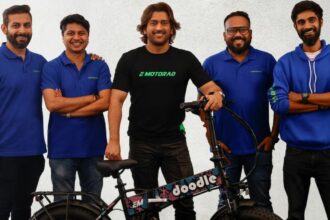On the off chance that taking care of the issues of independent driving were an issue of cash, it’d have been tackled well before now. That is the essential contention of Don Burnette, prime supporter and CEO of independent shipping startup Kodiak Robotics, which has extended its business and hit achievements with a negligible part of the assets that greater players like Waymo have.
Throughout the last year, Kodiak has sent off business pilots and organizations with Ceva Logistics and US Xpress, two huge shipping and coordinated operations organizations; started utilizing two new independent cargo paths beyond Texas and has raised a $125 million Series B, carrying its all out subsidizing to $165 million starting around 2018.
One of a handful of the confidential independent vehicle organizations available, Kodiak lives by the mantra of accomplishing more with less. Last year, Burnette let us know Kodiak could send a business scale activity for $500 million. That is around 10% of what Waymo has raised and under 25% of TuSimple’s IPO.
Kodiak is as yet holding back nothing and has gained notoriety for keeping a tight monetary record and a considerably more tight spotlight on pursuing self-driving trucks, and just self-driving trucks. Another person can address the other independence issues.
Another person can likewise address the issues of building sensors and naming information, as per Burnette, who depends on outsiders for such parts. In Kodiak’s eyes, building lidar in-house and investing energy and assets on naming information is only a costly interruption from making a protected and suitable go-to-showcase methodology.
“I’m not seeing as much pessimism around the business sectors as I’m hearing freely, and that gives me some idealism that this market is as yet thrilling and solid.” Don Burnette, fellow benefactor and CEO, Kodiak Robotics
It’s been a year since the last time we talked with Burnette for this series, so we got up to speed to discuss how rejecting HD maps has permitted Kodiak to venture into highway shipping paths quicker than contenders; how removable sensor cases will assist Kodiak with scaling; and why independent shipping might be resistant to the present bear market.
Manager’s note: The accompanying meeting, part of a continuous series with organizers who are building transportation organizations, has been altered for length and clearness.
TechCrunch: Autonomous shipping feels like it’s turning out to be more cutthroat as the business develops. How does Kodiak stick out?
Also Read: How This Technology-Enabled Logistics Company Is Enabling Ecommerce Businesses
Burnette: A significant piece of the story we needed to tell was the measured quality of the framework, since it was educated by discussions with accomplices. Last month, we showed that it is so natural to supplant one of our sensor cases in the field by a non-AV prepared professional. (Kodiak’s sensor cases incorporate one lidar, two radar and three cameras, and they supplant the truck’s stock sideview mirrors).
That last piece was truly critical to us, in light of the fact that the primary question we get when we converse with basically anyone in the shipping business is, “Assuming I have an AV armada, how would I keep up with that armada?”
We have zeroed in on guaranteeing that the AV stage doesn’t impede the current routine support foundation pipeline that exists for these accomplices. We feel that is an extraordinary contribution that different people are not focusing on, and I believe you will see a shift toward our plans and advances in the following two or three years.
Could the sensor units be set in a cargo truck to make them independent?
Believe it or not. We have planned it to be extremely skeptic to the truck supplier — we have dealt with every one of the large four stages to guarantee that this plan networks with each of the various suppliers out there in a perfect and consistent manner.















